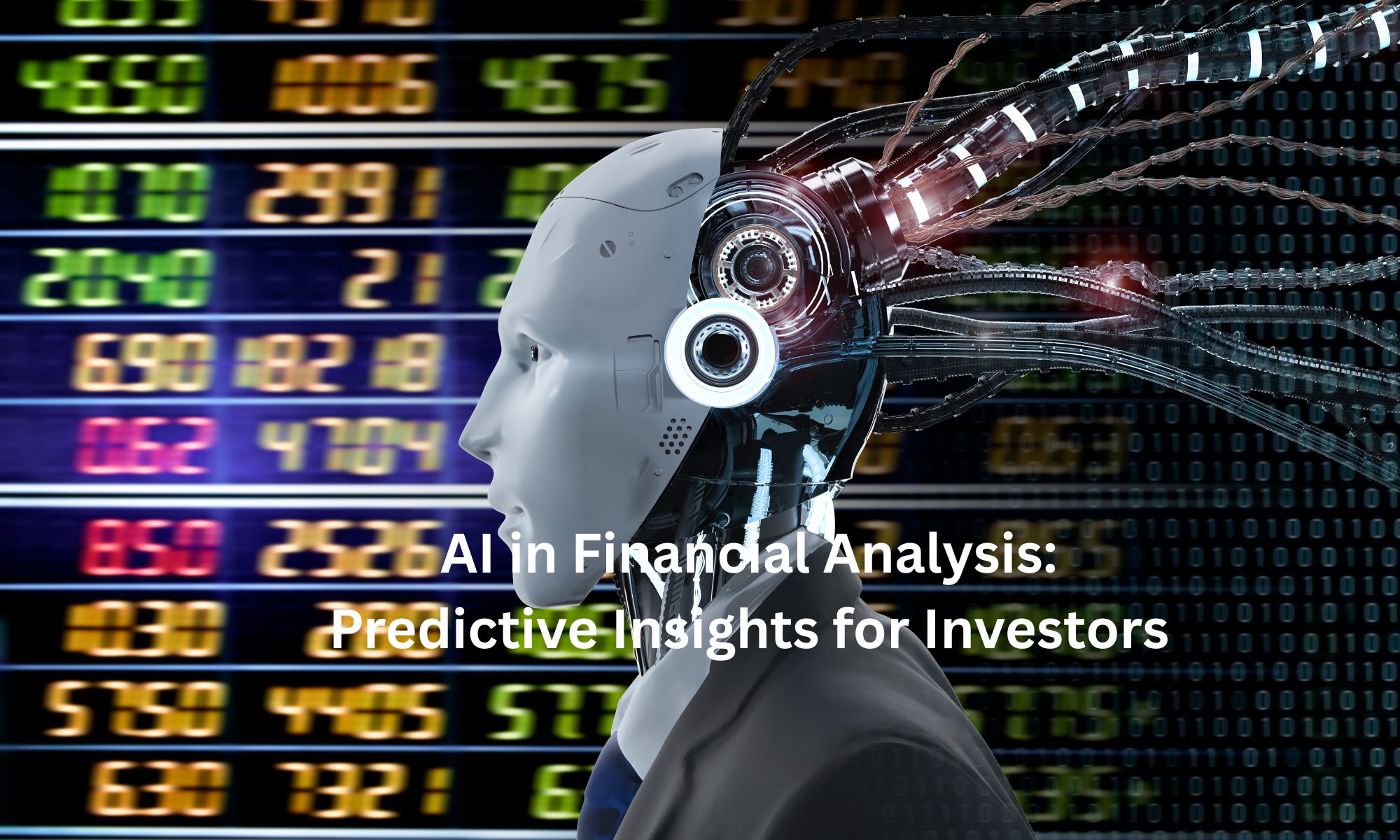Introduction – AI in Financial Analysis
The financial industry is undergoing a profound transformation driven by integrating artificial intelligence (AI) into economic analysis. By leveraging machine learning (ML), natural language processing (NLP), and predictive analytics, AI provides investors powerful tools to analyze data, forecast trends, and make informed decisions. This article explores how AI reshapes financial analysis, its applications in predictive insights, and its benefits for investors navigating complex markets.
What is AI in Financial Analysis?
AI in financial analysis refers to using advanced algorithms and data-driven technologies to automate processes, identify patterns, and generate actionable insights. Traditional economic analysis often relies on manual calculations and static models, which can be time-consuming and prone to human error. In contrast, AI-powered tools process vast datasets in real-time, enabling dynamic forecasting and precise decision-making.
For investors, AI offers predictive insights into market trends, asset performance, and risk factors. These capabilities empower them to optimize portfolios, mitigate risks, and capitalize on emerging opportunities.
Applications of AI in Financial Analysis
AI has diverse applications in financial analysis that are transforming how investors approach decision-making:
1. Predictive Analytics for Market Trends
AI uses historical data and real-time information to predict market trends accurately. Machine learning algorithms identify patterns that human analysts might overlook, enabling investors to anticipate price movements and adjust strategies accordingly.
2. Portfolio Optimization
AI-powered tools analyze portfolio performance and recommend adjustments based on market conditions, risk tolerance, and investment goals. These systems ensure portfolios remain balanced and aligned with long-term objectives.
3. Sentiment Analysis
Natural language processing (NLP) evaluates market sentiment by analyzing news articles, social media posts, and earnings reports. This helps investors gauge public perception of companies or sectors and make better-informed decisions.
4. Risk Management
AI identifies potential risks by analyzing economic indicators, geopolitical events, and historical data. Predictive models can simulate various scenarios to assess the impact of potential risks on investments.
5. Fraud Detection
AI systems detect anomalies in transaction data to prevent fraudulent activities. By identifying suspicious patterns early, these tools protect investors from financial losses.
6. Automated Trading
AI-driven trading platforms execute buy or sell orders based on predefined criteria or real-time market conditions. These systems reduce human error and enable faster responses to market fluctuations.
7. ESG Analysis
AI helps investors evaluate environmental, social, and governance (ESG) factors by analyzing vast amounts of sustainability data. This ensures investments align with ethical standards while delivering strong returns.
Benefits of AI in Financial Analysis
The integration of AI into financial analysis provides several advantages for investors:
1. Enhanced Accuracy
AI minimizes errors by processing large datasets with precision. Predictive models continuously improve as they learn from new data inputs.
2. Time Efficiency
By automating repetitive tasks like data collection and analysis, AI saves investors time by allowing them to focus on strategic decision-making.
3. Data-Driven Insights
AI uncovers hidden patterns in complex datasets that traditional methods might miss. These insights enable more informed investment decisions.
4. Real-Time Decision-Making
AI processes data in real-time, allowing investors to respond quickly to market changes or emerging risks.
5. Personalization
AI tailors investment strategies based on individual risk profiles, financial goals, and preferences, ensuring a customized approach for every investor.
Challenges of Implementing AI in Financial Analysis
Despite its benefits, adopting AI in financial analysis comes with challenges:
1. Data Quality Issues
The accuracy of AI predictions depends on the quality of input data. Incomplete or biased datasets can lead to unreliable insights.
2. High Implementation Costs
Deploying advanced AI systems requires significant investment in technology infrastructure and skilled personnel.
3. Ethical Concerns
Algorithmic bias or lack of transparency in AI models can lead to unfair outcomes or reduced stakeholder trust.
4. Regulatory Compliance
Financial institutions must ensure that AI systems adhere to strict data privacy and security regulations.
Best Practices for Using AI in Financial Analysis
To maximize the benefits of AI-driven financial analysis:
1. Invest in High-Quality Data: Ensure datasets are accurate, comprehensive, and bias-free.
2. Combine Human Expertise with AI: Use AI efficiently but rely on human oversight to interpret complex insights.
3. Focus on Ethical Practices: Address algorithmic bias and ensure transparency in AI decision-making processes.
4. Monitor Performance Metrics: Regularly evaluate the effectiveness of AI tools using KPIs like forecast accuracy or portfolio returns.
5. Train Teams: Train analysts to use AI tools while effectively integrating them into existing workflows.
Real-World Examples
Several organizations have successfully implemented AI-driven financial analysis:
– JPMorgan Chase: JPMorgan Chase uses its COiN platform powered by NLP to analyze legal documents efficiently.
– UBS: Leverages AI to provide personalized investment insights tailored to client goals.
– CapitalGains Investments: Achieved a 20% increase in annual returns using an AI-driven platform for market trend prediction.
– HSBC: Employs machine learning models for fraud detection across transaction data.
– Carbon Bank: Uses predictive analytics to assess customer credit risk accurately.
Conclusion – AI in Financial Analysis
AI is revolutionizing financial analysis by delivering predictive insights that empower investors to make informed decisions more accurately and efficiently. From forecasting market trends to optimizing portfolios and managing risks, its applications transform how investments are managed in today’s fast-paced markets.
As competition intensifies across the financial sector, adopting AI-powered solutions is essential for staying ahead while navigating complex investment landscapes.

